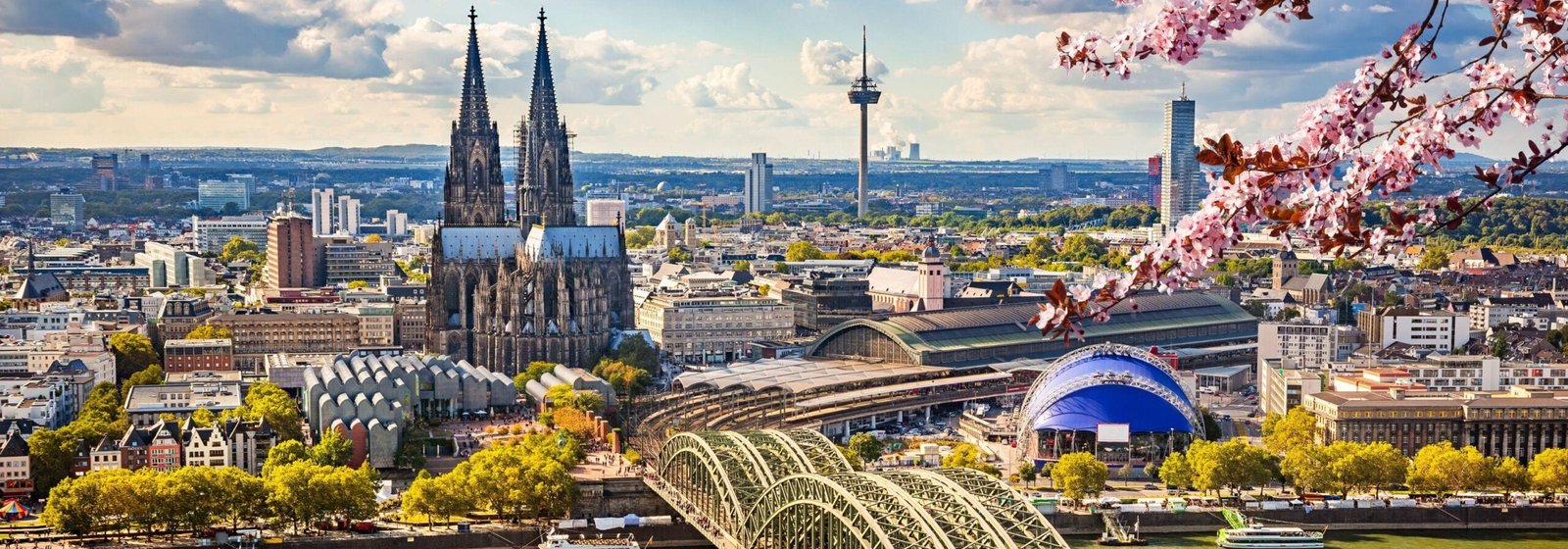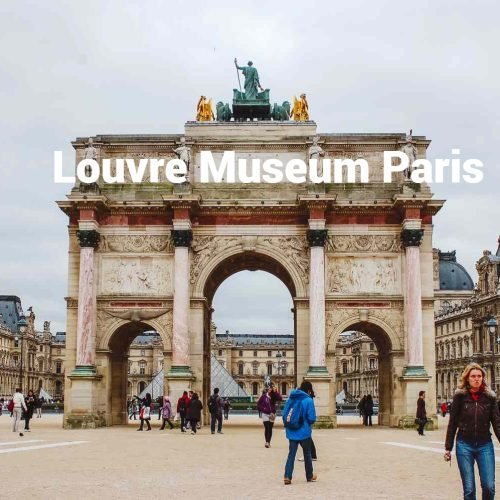Table of Contents
ToggleCologne Cathedral Germany’s Gothic Masterpiece and Iconic Landmark
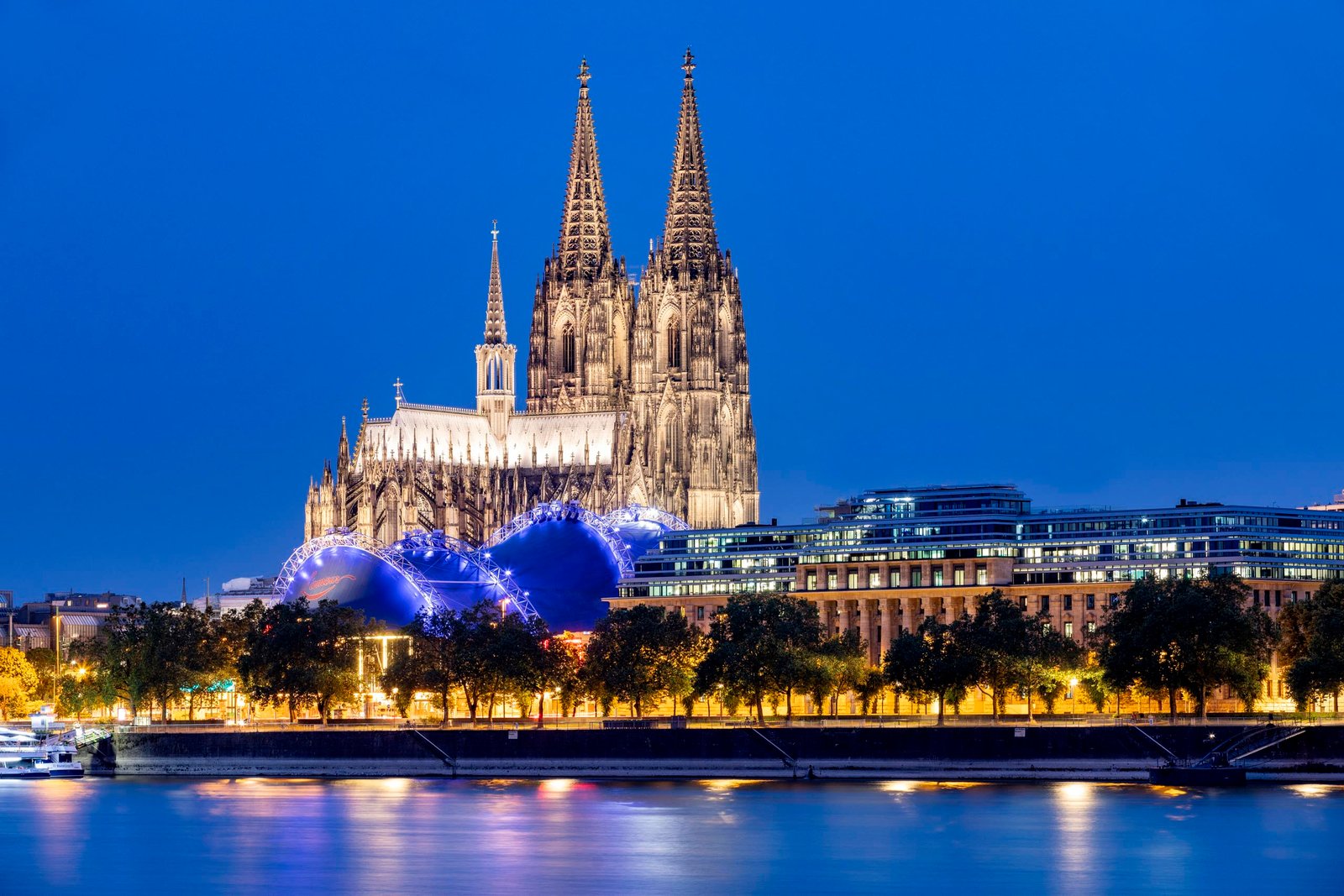
1. Introduction to Cologne Cathedral
The Cologne Cathedral in Germany is a breathtaking Gothic masterpiece, admired for its towering spires and intricate details. As one of Europe’s most visited landmarks, it draws millions of travelers who marvel at its grandeur and historical significance.
2. Historical Significance
Construction of the Cologne Cathedral began in 1248 and spanned over six centuries, finally being completed in 1880. It was built to house the relics of the Three Kings and stands today as a symbol of faith, endurance, and architectural brilliance.
3. Architectural Marvel of Cologne Cathedral
Renowned for its twin spires reaching 157 meters, the Cologne Cathedral is one of the tallest churches in the world. Its stained glass windows, intricate carvings, and soaring arches showcase the pinnacle of Gothic architecture, making it a timeless treasure.
4. UNESCO World Heritage Status
Recognized by UNESCO in 1996, Cologne Cathedral is celebrated for its cultural and historical value. It stands as a beacon of medieval artistry and a testament to Germany’s rich heritage.
5. Visitor Information
Open year-round, visitors can explore its interiors, climb to the observation platform, and witness panoramic views of Cologne city.
6. Best Time to Visit
Spring and autumn offer the most pleasant climate, with fewer crowds compared to peak summer.
7. How to Reach Cologne Cathedral
Located in the heart of Cologne, it’s easily accessible by train, tram, or bus. The main station is just a few steps away from the cathedral’s entrance
Introduction to Cologne Cathedral

The Cologne Cathedral (Kölner Dom) is one of the most magnificent architectural achievements in the world and a crown jewel of Germany’s cultural heritage. Rising majestically above the city of Cologne, this Gothic masterpiece has captured the imagination of travelers, architects, and historians for centuries. Its towering spires, intricate stonework, and awe inspiring stained glass windows create an unmistakable silhouette that dominates the skyline, making it one of the most recognizable landmarks in Europe.
Construction of the cathedral began in 1248, inspired by the medieval ambition to create a house of worship that would reflect the glory of God and the wealth of the city. The project, however, spanned over 600 years, with various interruptions due to wars, economic challenges, and changing political landscapes. It was finally completed in 1880, yet it still retains an authentic medieval character that sets it apart from other historic churches.
The design of the Cologne Cathedral follows the classic Gothic style, characterized by pointed arches, ribbed vaults, and flying buttresses that allow for breathtakingly tall walls and expansive stained glass installations. Visitors are often spellbound by the sheer scale of the structure its twin spires soar to a height of 157 meters (515 feet), making it the tallest twin spired church in the world. Inside, the ambiance is equally impressive, with soaring ceilings, delicate carvings, and the renowned Shrine of the Three Kings, believed to hold relics of the Magi.
Beyond its architectural grandeur, the cathedral has served as a focal point of faith and resilience for the people of Cologne. It miraculously survived World War II bombings, standing as a symbol of endurance and hope amid the devastation of the city. Today, it continues to host daily worship, cultural events, and countless visitors from across the globe.
The location of the cathedral adds to its appeal it sits just steps away from Cologne Central Station, making it incredibly accessible to both domestic and international travelers. Whether you are an art enthusiast, a history lover, or simply someone in search of awe inspiring beauty, this iconic site promises a truly unforgettable experience.
Visiting the Cologne Cathedral is not just a journey into Germany’s medieval past it is an encounter with one of humanity’s most ambitious and enduring works of art
Historical Significance
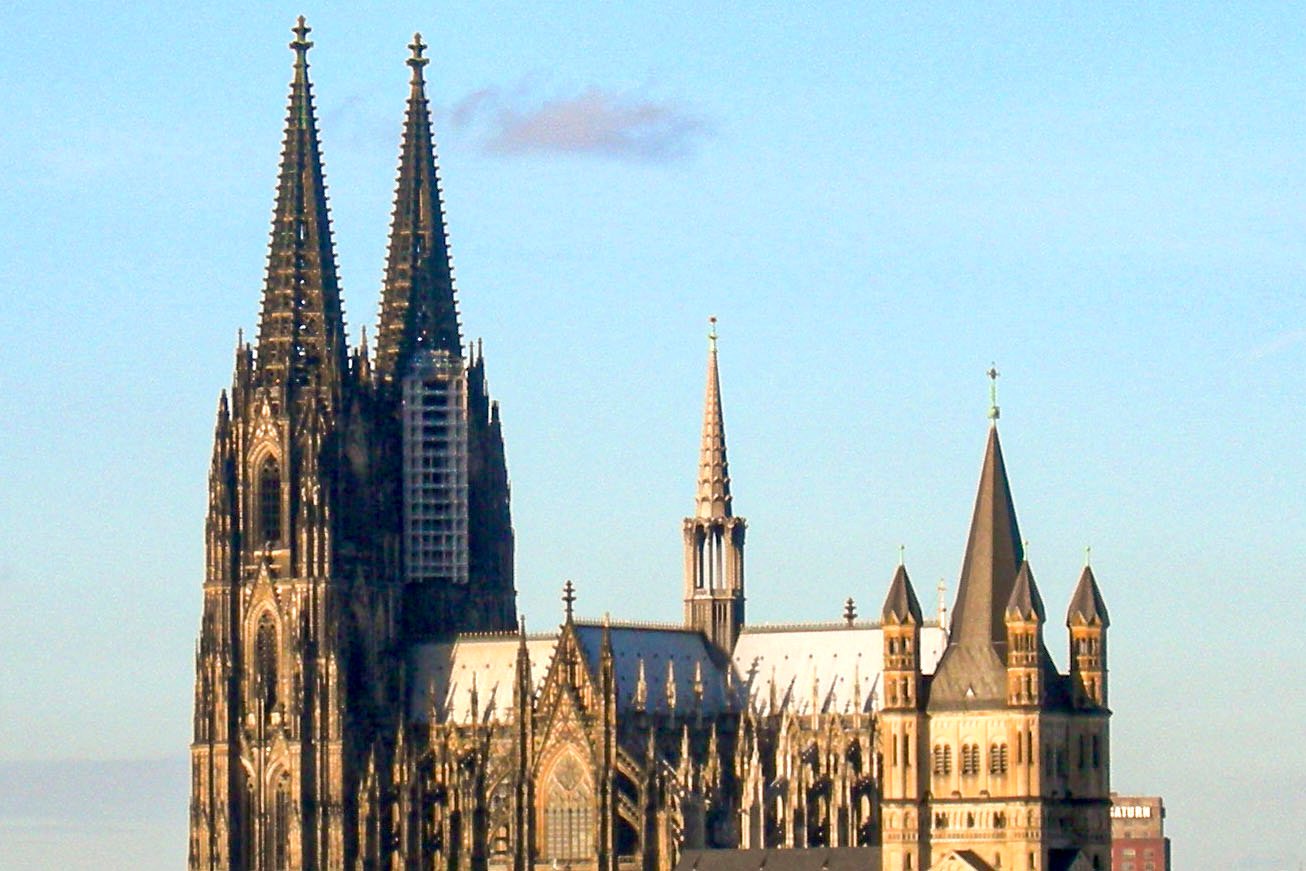
The history of the Cologne Cathedral is as remarkable as its towering presence over the city of Cologne. Construction began in 1248, during a period when Gothic architecture was at its peak in Europe. The cathedral was commissioned to serve as a grand reliquary for the relics of the Three Kings Christian treasures that were brought to Cologne from Milan in 1164 by Archbishop Rainald of Dassel. These relics elevated the city’s status as a major pilgrimage destination, prompting the construction of a church worthy of such spiritual importance.
For medieval Europe, the building of the Cologne Cathedral was an extraordinary endeavor, both in ambition and scale. The original medieval masons envisioned a structure that would rival the great cathedrals of France, with soaring spires, elaborate stone carvings, and vast stained glass windows that would fill the interior with divine light. However, the project faced numerous delays over the centuries due to political instability, financial shortages, and shifts in architectural styles.
By the mid-16th century, construction came to a halt, leaving the cathedral partially completed for more than 300 years. The unfinished structure stood as a mix of Gothic splendor and incomplete scaffolding, a reminder of the city’s earlier ambitions. It wasn’t until the 19th century fueled by a surge of German nationalism and romanticism that work resumed in earnest. Using the original medieval plans, builders completed the cathedral in 1880, creating the awe inspiring structure we see today.
The Cologne Cathedral has also played a symbolic role throughout history. During World War II, the city of Cologne was heavily bombed, but the cathedral miraculously survived the destruction, despite sustaining some damage. It became a symbol of resilience and hope, standing tall amid the ruins of the city. Post-war restoration ensured that it would continue to inspire future generations.
In recognition of its cultural and historical value, UNESCO designated Cologne Cathedral a World Heritage Site in 1996. This acknowledgment affirmed its status as one of the finest examples of Gothic architecture in the world and as a monument of outstanding universal value.
Today, the cathedral continues to function as a place of worship, pilgrimage, and tourism. Its history reflects the endurance of human vision and the ability to create something that transcends time, faith, and cultural boundaries
Architectural Grandeur
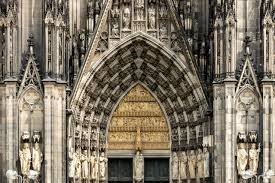
The Cologne Cathedral is a pinnacle of Gothic architecture, celebrated for its breathtaking scale, intricate detailing, and harmonious proportions. From the moment it comes into view, its two colossal spires each rising to 157 meters command attention, making it the tallest twin spired church in the world. This towering structure dominates Cologne’s skyline, visible from miles away, and serves as both a spiritual beacon and an architectural wonder.
One of the most remarkable aspects of the cathedral’s design is its faithful adherence to Gothic principles. The pointed arches, ribbed vaults, and flying buttresses not only enhance the building’s beauty but also provide the structural support needed to achieve such extraordinary height. These elements allow for vast expanses of stained glass, which flood the interior with colorful, ethereal light. The south transept’s modern stained glass, designed by artist Gerhard Richter, blends contemporary artistry with centuries old tradition, creating a visual dialogue across time.
The façade of the Cologne Cathedral is a masterpiece in itself, adorned with hundreds of stone statues representing saints, kings, prophets, and biblical scenes. Each carving is a work of art, meticulously crafted to convey religious narratives and moral lessons. The attention to detail extends to the gargoyles, which serve both decorative and functional purposes, channeling rainwater away from the structure while adding to its Gothic character.
Inside, the sense of scale is overwhelming. The nave stretches over 144 meters in length, with soaring ceilings that seem to lift the gaze heavenward. The choir area, completed in the 14th century, is particularly stunning, featuring intricate choir stalls, elaborate tracery, and the famous Shrine of the Three Kings a gilded reliquary said to contain the remains of the Magi.
The cathedral’s construction spanned more than six centuries, yet the design remained remarkably consistent thanks to the original medieval plans being preserved. This dedication to architectural unity is one of the reasons the building feels so cohesive despite its long construction period.
Beyond its aesthetic beauty, the Cologne Cathedral stands as a testament to human ambition, craftsmanship, and perseverance. Every arch, spire, and sculpture tells a story of faith and artistry, creating an atmosphere that continues to inspire awe in all who step inside
UNESCO World Heritage Status
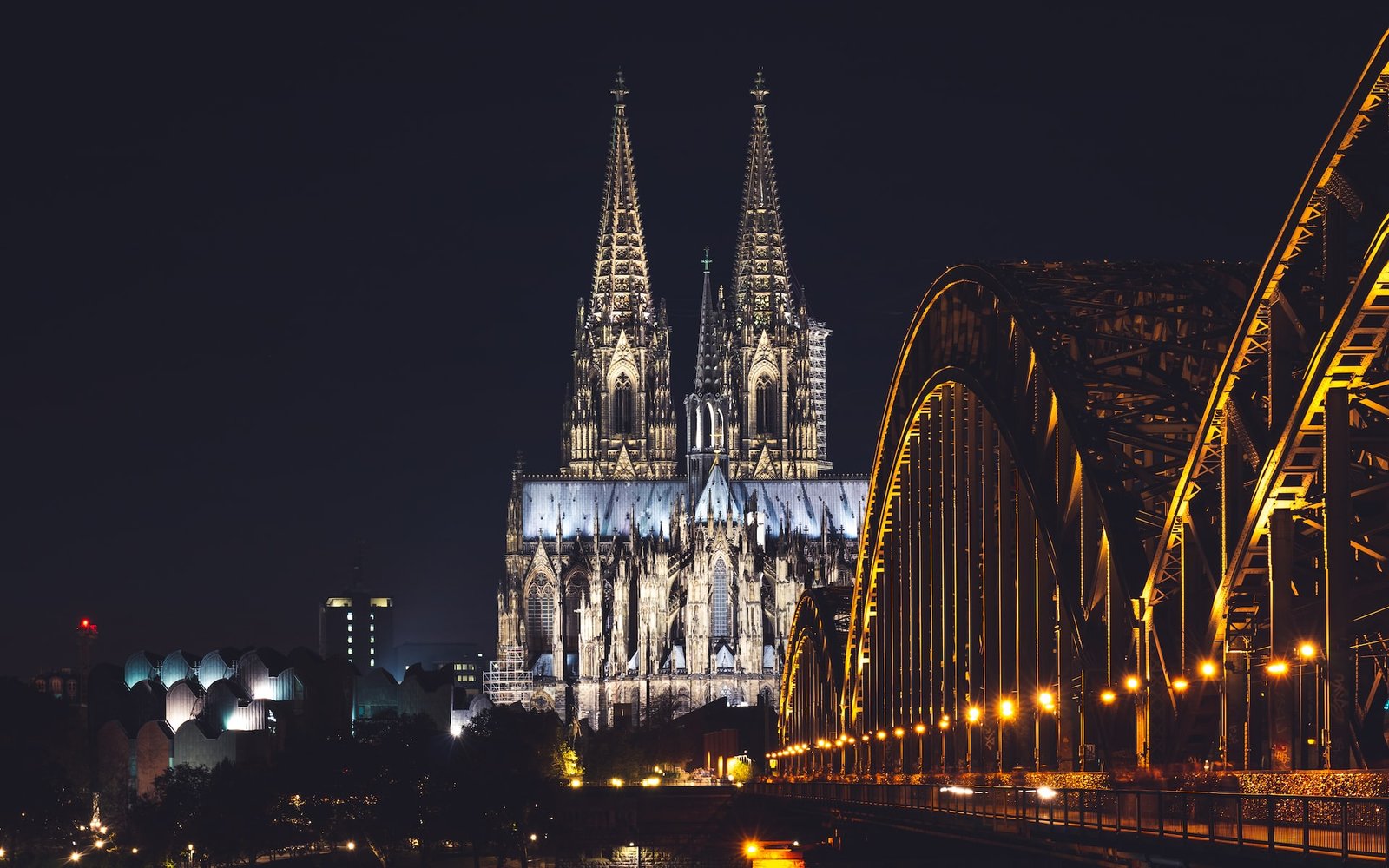
The Cologne Cathedral earned its designation as a UNESCO World Heritage Site in 1996, a recognition that celebrates its exceptional cultural, historical, and architectural significance. UNESCO describes the cathedral as “an exceptional work of human creative genius,” and rightly so it stands as one of the finest examples of High Gothic architecture anywhere in the world.
The decision to grant this status was based on several factors. First, the cathedral’s sheer scale and craftsmanship represent the pinnacle of medieval engineering and artistry. Its towering twin spires, intricate stone carvings, and vast stained glass windows embody the ambition and skill of generations of builders. Second, the cathedral holds immense spiritual value as a major pilgrimage destination, housing the revered Shrine of the Three Kings. This reliquary has drawn pilgrims from across Europe for centuries, contributing to Cologne’s importance as a religious and cultural hub.
UNESCO also acknowledged the cathedral’s remarkable resilience. Despite suffering damage during World War II bombings, it remained standing amidst the devastation of the city, symbolizing hope and endurance. Extensive restoration work in the post-war years ensured that its original Gothic character was preserved, allowing future generations to experience its authentic beauty.
Today, inclusion on the World Heritage List helps safeguard the Cologne Cathedral for the future. The status brings international attention, funding opportunities, and stricter conservation measures to maintain its structural integrity and artistic detail. Preservation teams work continuously to protect the building from environmental damage, urban pollution, and the natural wear of time.
Being part of the UNESCO list not only honors the cathedral’s historical legacy but also cements its role as a living monument welcoming millions of visitors each year who come to admire its grandeur and connect with a masterpiece that has stood the test of time.
Visitor Information
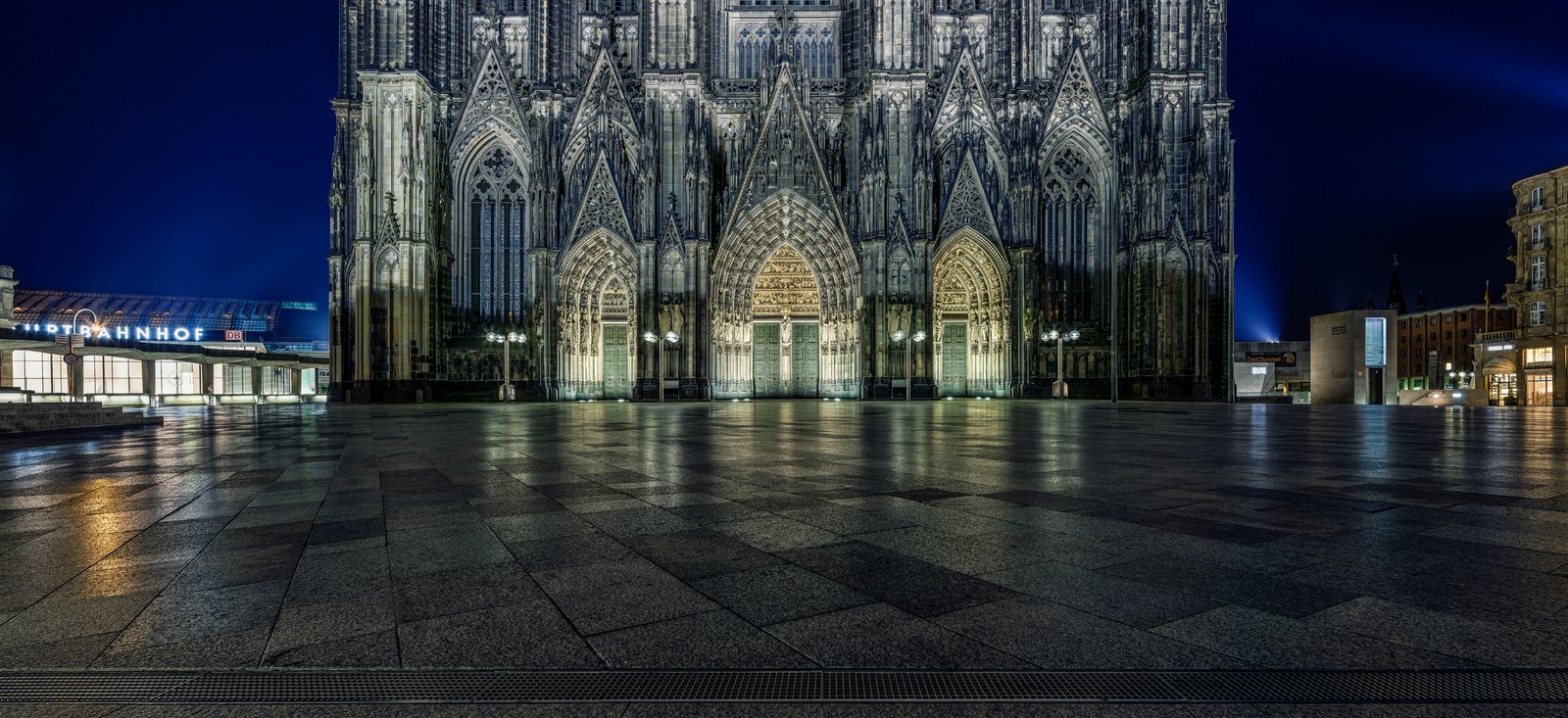
The Cologne Cathedral is one of Germany’s most accessible and visited landmarks, welcoming millions of travelers each year. Located in the heart of Cologne, it sits right next to the city’s central train station (Köln Hauptbahnhof), making it extremely easy to reach whether you’re arriving by train, tram, bus, or even on foot from nearby hotels and attractions.
Opening Hours:
Monday to Sunday: Typically open from early morning (around 6:00 AM) until evening (around 8:00 PM).
Special Hours: Certain sections, such as the treasury and tower climb, may have different timings. Always check the official Cologne Cathedral website for the latest updates, especially during holidays or special events.
Entry Fees:
General entry to the main cathedral area is free.
Small fees apply for optional experiences such as visiting the treasury, climbing the south tower for panoramic city views, or joining guided tours.
Guided Tours:
Professional tours are available in multiple languages, offering rich insights into the cathedral’s history, architecture, and religious significance. Audio guides are also available for self paced exploration.
Accessibility:
The Cologne Cathedral is largely wheelchair-accessible, with ramps and designated areas for visitors with mobility challenges. Staff members are available to assist when needed.
Photography:
Photography is generally permitted for personal use, but flash and tripods may be restricted to preserve the delicate artworks and maintain a respectful atmosphere during services.
Visitor Tips:
Arrive early in the morning to avoid crowds, especially during peak tourist seasons.
Wear comfortable shoes if you plan to climb the 533 steps to the top of the south tower.
Respect the cathedral’s role as a place of worship quiet behavior and modest dress are appreciated.
Whether you have just 30 minutes for a quick look or an entire afternoon to explore every detail, visiting the Cologne Cathedral is an unforgettable experience that combines history, art, and spirituality in one breathtaking location.
How to Reach Cologne Cathedral

The Cologne Cathedral (Kölner Dom) is located at the very heart of Cologne, Germany, making it one of the easiest landmarks to access in the country. Its central position right next to the city’s main transport hub means visitors can reach it effortlessly by train, tram, bus, car, or even on foot from nearby attractions.
By Train
Cologne Central Station (Köln Hauptbahnhof) is just steps away from the cathedral’s main entrance. Whether you are arriving from another German city or an international destination like Brussels, Paris, or Amsterdam via high speed rail, you’ll exit the station to find the cathedral towering right in front of you.
By Tram and Bus
Cologne’s public transport network is efficient and affordable. Several tram and bus lines stop at or near Köln Hauptbahnhof, making it a convenient option for travelers staying in different parts of the city. The station is connected to lines that also link to Cologne/Bonn Airport.
By Air
From Cologne/Bonn Airport (CGN), you can reach the cathedral in about 15 minutes via the S-Bahn (suburban train). Simply take the S19 or RE6 to Köln Hauptbahnhof. The direct and frequent connections make it easy for visitors arriving by air to start their sightseeing without delay.
By Car
Driving into Cologne is possible, but parking in the city center can be limited and expensive. Public parking garages are available within walking distance of the cathedral. Visitors should also be aware of Cologne’s environmental zone (Umweltzone), which requires vehicles to have a green emissions sticker.
On Foot or by Bicycle
For those staying in central Cologne, walking or cycling is a great option. The cathedral’s spires are visible from many points in the city, making it an easy landmark to navigate toward.
Whether you arrive by train, bus, air, or on foot, reaching the Cologne Cathedral is remarkably straightforward another reason it’s one of Europe’s most visited and admired attractions

Final Thoughts
The Cologne Cathedral is far more than just a remarkable piece of architecture it is a living testament to centuries of devotion, artistry, and resilience. From its soaring Gothic spires to its intricately detailed interiors, every element reflects the skill, vision, and faith of countless generations who contributed to its creation.
Visiting the cathedral is an experience that blends history, culture, and spirituality. Whether you are standing in awe beneath its vaulted ceilings, admiring the luminous stained glass, or taking in panoramic views from the south tower, the sense of grandeur is truly unforgettable.
Its location in the heart of Cologne makes it easily accessible, while its status as a UNESCO World Heritage Site ensures its preservation for generations to come. The Cologne Cathedral has survived wars, political changes, and the test of time emerging each time as a symbol of hope and endurance.
For travelers, it offers more than just a sightseeing opportunity. It invites reflection on the human capacity to dream and create on a monumental scale. No matter your background or beliefs, stepping into this sacred space is a humbling reminder of the shared heritage that connects us across time and cultures.
In the end, the Cologne Cathedral is not simply a place to visit it’s a place to experience, to feel, and to remember long after you leave. Whether it’s your first time in Cologne or a return visit, this Gothic masterpiece promises to leave you inspired and in awe
FAQs
Q1. Where is the Cologne Cathedral located?
The Cologne Cathedral (Kölner Dom) is located in the heart of Cologne, Germany, right next to the city’s central train station (Köln Hauptbahnhof).
Q2. Is there an entry fee to visit Cologne Cathedral?
Entry to the main cathedral area is free. However, small fees apply for visiting the treasury, climbing the south tower, or joining guided tours.
Q3. What are the opening hours of Cologne Cathedral?
The cathedral is generally open daily from early morning (around 6:00 AM) until evening (around 8:00 PM). Special sections like the tower and treasury may have separate hours.
Q4. How long does it take to tour the cathedral?
A quick visit can take 30–45 minutes, but to fully explore the interior, treasury, and tower, allow at least 1.5 to 2 hours.
Q5. Can you climb the towers of Cologne Cathedral?
Yes. Visitors can climb the south tower via a staircase of 533 steps for stunning panoramic views of Cologne and the Rhine River.
Q6. Is Cologne Cathedral a UNESCO World Heritage Site?
Yes. The cathedral was designated a UNESCO World Heritage Site in 1996 for its outstanding Gothic architecture and historical significance.
Q7. Can I take photos inside the cathedral?
Photography for personal use is generally allowed, but flash and tripods may be restricted, especially during services.
Q8. What is the best time to visit Cologne Cathedral?
Early mornings or late afternoons on weekdays are ideal to avoid large tourist crowds. Spring and autumn offer pleasant weather for sightseeing.
Q9. How do I get to Cologne Cathedral from the airport?
From Cologne/Bonn Airport (CGN), take the S-Bahn (S19) or regional train to Köln Hauptbahnhof. The journey takes about 15 minutes, and the cathedral is right outside the station.
Q10. Why is Cologne Cathedral famous?
It is renowned for its monumental Gothic architecture, historical significance, and as the home of the Shrine of the Three Kings, attracting millions of visitors annuall

